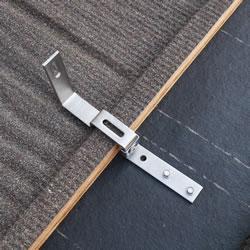What strikes me most as a leap forward in terms of innovative, even disruptive, business concepts, is the installing of a waste-to-energy plant at the site of a power-customer itself.
Green Belgian Chocolate? Yum.
Steve Clemens | United Business Institutes
| What strikes me most as a leap forward in terms of innovative, even disruptive, business concepts, is the installing of a waste-to-energy plant at the site of a power-customer itself. |
|
Green Belgian Chocolate? Yum. Benelux biggest green energy producer helps Belgian chocolate factory get reliable power. |
|
Steve Clemens, Professor Environmental Economics United Business Institutes |
|
Electrawinds, a privately owned business in Belgium, is currently the biggest green energy producer in the Benelux region, and is now expanding operations into providing on-site reliable power to manufacturing plants worldwide.
It all started in 1998, when brothers Paul and Luc Desender were frustrated with their energy provider. Back then, pre-liberalization Belgium was still in a monopolist-led electricity market, and the bargaining power was inevitably tilted towards the supplier’s side. A first wind turbine was set up, only 600KW, for own supply. And today, a mere 8 years later, they have about 60 MW of distributed green electricity production up and running. The most recent Electrawinds project to come on line was a biomass burning plant, pumping 12MW into the grid 24/7 in Ostend, at the Belgian North-sea coast. This computes to about 96.000MWh of green electricity, or an equivalent of the consumption of about 30.000 families. For this ground-breaking waste-to-energy plant, millions of litres of waste cooking oils (mostly vegetable) are sourced, processed for cleaning and combusted in 4 massive marine shipping-engines. The 4 ABC engines are turbocharged diesel, 16 cylinders in V-shape running at a constant 1.000 rpm. Nothing is wasted, and nothing is left to chance. The Electrawinds lab analyses the content of every grease supplier’s cargo before unloading. Now, running a diesel engine on vegetable oil, be it waste or fresh, is no nuclear science. I myself still run my 4 year old SAAB 93 on a 30% vegetable oil mix, effortlessly, without vehicle modifications. (don’t try this at home kids!, you need to know what you’re doing). But when you’ve got a 22 million Euro operation with multi-million Euro equipment running at the edge, there is no room for messing up. Variations in fuel quality, impurities, contamination, and many more variables, can have disastrous consequences on the machines’ lifespan and can trigger more costly overhaul & maintenance programs. And these are just the fuel issues... Equally impressive though is their pipeline of projects for the near future, most of which are licensed and approved. More wind turbines and biomass plants in Belgium, Poland, Romania, Italy, South-Africa, Namibia, etc. Too numerous to list, like a tsunami of green energy on the European and African continent. But what strikes me most as a leap forward in terms of innovative, even disruptive, business concepts, is the installing of a waste-to-energy plant at the site of a power-customer itself. The customer in this case is not the grid but a large power consumer, which brings us into the realms of distributed generation. Apart from the societal benefits of less need for transmission lines and grid capacity, leading to more reliability and quality of service, the direct economical upside for the customer can be impressive indeed. In this case the customer is Barry Callebaut, a Swiss chocolate giant with a 250.000 tons/year production facility in Wieze, Belgium. An on-site 35MW power plant will be installed and run by Electrawinds. The Barry Callebaut electric power supply will be more reliable, costs are projected to be much lower, and let us not forget the abundant on-site thermal energy, i.e. steam, which can be used in numerous production processes around the production facility. Mr. Dirk Poelman, Head of OSCO at Callebaut states “I have searched the whole European horizon for reliable partners to provide our production facility with better quality power service at much lower costs, and I found it in Electrawinds right here in Belgium. This project is fully in line with our environmental strategy. Electrawinds have the experience and the approach to make this a win-win for everybody involved; more specifically a no-worries deal for us.” Electrawinds has just finished a first financing round of 30 million Euros in exchange for a minority stake of the company with Private Equity and Venture Capital firm 3i. Owners Paul and Luc Desender still keep more than 70% of Electrawinds’ equity. Any energy trader, investment company, or manufacturing company would be well advised to keep an eye on Electrawinds for future opportunities. |
|
The content & opinions in this article are the author’s and do not necessarily represent the views of AltEnergyMag
Comments (0)
This post does not have any comments. Be the first to leave a comment below.
Featured Product

